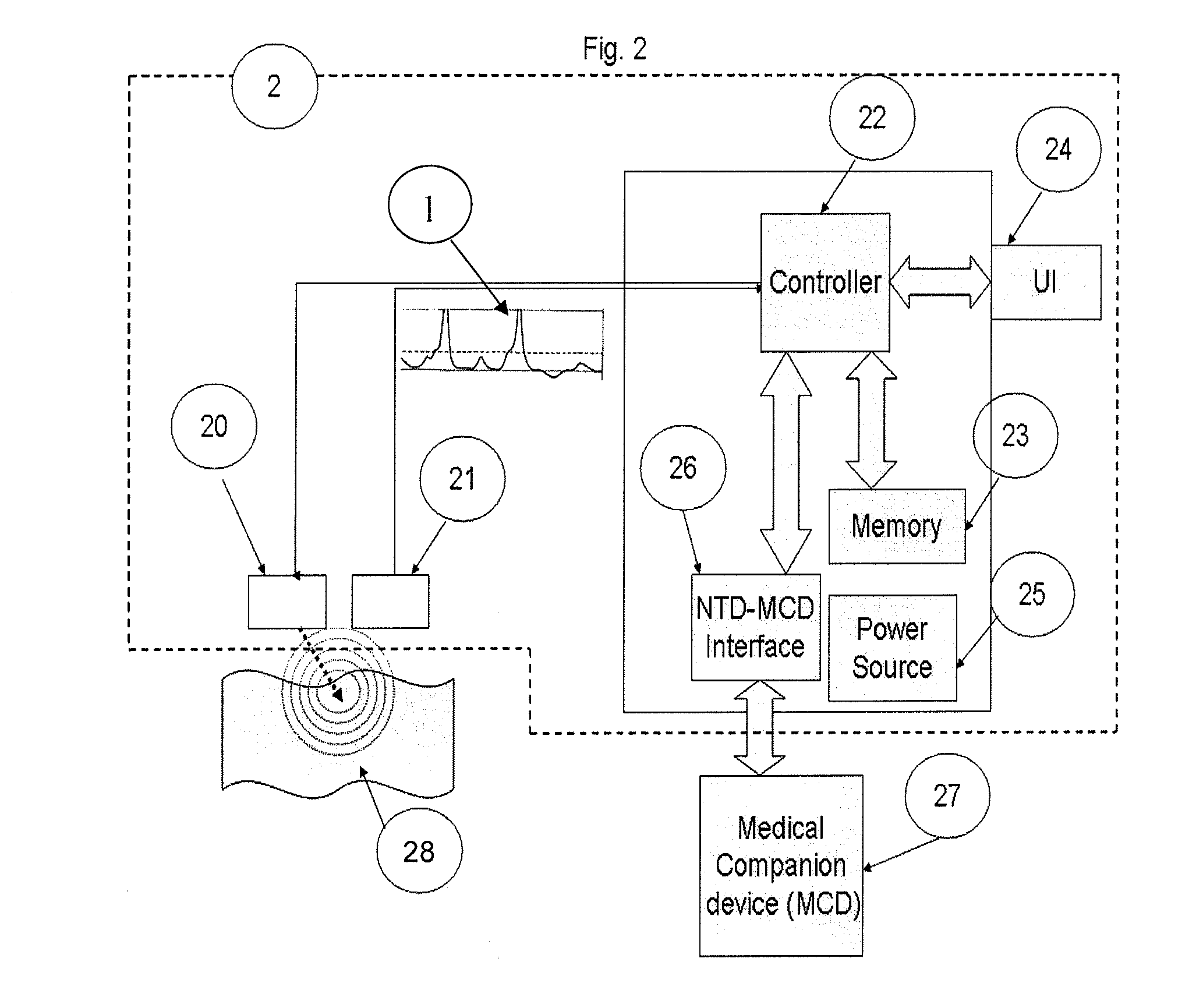Method And Apparatus For The Detection Of Neural Tissue
- Summary
- Abstract
- Description
- Claims
- Application Information
AI Technical Summary
Benefits of technology
Problems solved by technology
Method used
Image
Examples
third exemplary embodiment
[0135]A third embodiment comprises a variation of the first or the second embodiment.
[0136]While in each of the previous embodiments the emitter 20 and the APD 21 require both physical contact with the targeted area 28 or lack thereof, in the third embodiment, the emitter 20 may require physical contact as in the second embodiment and the APD 21 may be such as not involving physical contact with the targeted area 28 or vice-versa. Apart from the mixed typology of the emitter 20 and the APD 21, this third preferred embodiment is similar in the other aspects to the first and / or the second embodiments.
fourth exemplary embodiment
[0137]In this fourth embodiment, the NTD 2 may be mounted on a surgical tool which is manually held and used by the surgeon without the mediation of a robot or any similar device. It should be noted that although the medical companion device (MCD) in previous embodiments was illustrated using a surgical robot, the MCD 27 may also be a non-robotic manually operated device or system and, more generally, any appropriate surgical tool. This consideration regarding the MCD 27 applies to all embodiments of the invention.
[0138]Typical surgical tools that fall in the category of MCD 27 in this embodiment are: scalpels, scissors, electrosurgical forcipes, ultrasonic surgical dissector and aspirator and syringes. Said tools may also optionally be used in a laparoscopic setting.
[0139]In this embodiment, as in the previous ones, the NTD 2 may be combined with a manually held surgical tool in any suitable manner which is desirable for a specific implementation of the invention. The NTD 2 may be ...
fifth exemplary embodiment
[0143]The fifth embodiment of this invention relates to a NTD 2 which is meant solely to detection of neural tissue and which constitutes a standalone device. In this case, the NTD 2 serves only the purpose of detecting the presence of neural tissue in the course of a surgery but it is not mounted or combined or otherwise used in conjunction, and does not communicate or affect in any manner whatsoever the functioning of any medical surgical tool—that is an MCD 27—that the surgeon uses in the course of the operation and does not interact in any way with the MCD 27.
[0144]Apart from the fact of being physically and functionally detached from the MCD 27, the NTD 2 in this embodiment may retain some or all of the NTD 2 functionalities described in the previous embodiments, as it may be advantageous for specific medical requirements.
PUM
 Login to View More
Login to View More Abstract
Description
Claims
Application Information
 Login to View More
Login to View More - R&D
- Intellectual Property
- Life Sciences
- Materials
- Tech Scout
- Unparalleled Data Quality
- Higher Quality Content
- 60% Fewer Hallucinations
Browse by: Latest US Patents, China's latest patents, Technical Efficacy Thesaurus, Application Domain, Technology Topic, Popular Technical Reports.
© 2025 PatSnap. All rights reserved.Legal|Privacy policy|Modern Slavery Act Transparency Statement|Sitemap|About US| Contact US: help@patsnap.com



